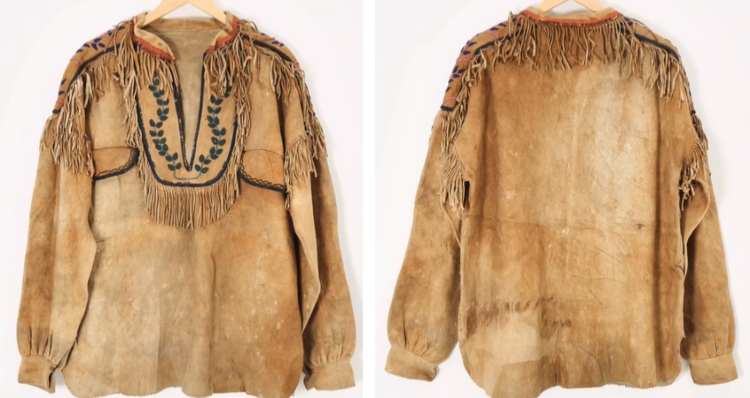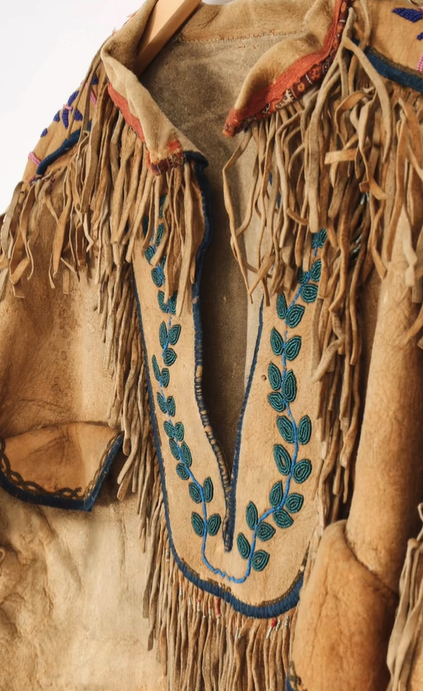Half the fun of shopping at thrift stores is finding something completely unexpected. Staff members at Glass Onion vintage shop in South Yorkshire, England are used to opening random items while sorting through the thousands of garments that pass through the store, but in July 2022, one item stopped them in their tracks. While going through hundreds of jackets that came from their supplier in the United States, a sorter pulled out an incredible handmade buck hide jacket with delicate fringe and intricate embroidery.
In the 15 years they’ve been in business, staff members had never seen anything quite like it. The leather is butter-soft, and they could tell from the attention to detail that someone had spent a long time crafting the garment. It was clear that this jacket is very old, and potentially meaningful to a community Glass Onion shop workers know nothing about. They decided to ask for help from North American indigenous communities on TikTok.
“We’d never seen a jacket quite like that before, so we knew it was something really special,” stated Alice Leadbetter, Glass Onion’s head of marketing.
The social media response was overwhelming. People were immediately invested in discovering the jacket’s history, and many users put Alice in touch with organizations and government agencies who could help. Thousands of people chimed in with ideas to trace the garment’s path through life. Textile and indigenous cultures experts examined the beadwork and stitching techniques in order to determine its age and narrow down where it was made.
It turns out, this jacket was likely made in the early-to-mid-1800s, making it about 170 years old!
“Certain design elements (such as the olive-green chain stitch on the pockets) indicate it was likely made around the 1850s, possibly by an artist for a family member or a fur trader,” Alice explained. “The consensus is that it it’s likely Métis or Cree from Western Canada (Manitoba, Saskatchewan or Alberta).”
“We’ve recently found out that the fringe tassels are wrapped in dyed porcupine-quills too which is pretty crazy,” she added.
Maureen Matthews of the Manitoba Museum in Canada helped Alice further narrow down the jacket’s origin. The style of embroidery was taught in the Red River region in the 1850s. They believe it was originally made for a Cree fur trader, but that theory hasn’t been verified yet.
Alice and the other staff members continue to research the jacket, which they will not place for sale. They’re hoping they can reunite it with its indigenous community back in Canada, just as soon as they figure out where that is!
“It would be amazing to get confirmation of where the jacket is from and who made it so we can look at reuniting the piece with its community,” said Alice.
What a thrilling discovery! We hope Alice and her team can track down the right place for this beautiful and historic find.
You can find the source of this article’s featured image here.
Want to be happier in just 5 minutes a day? Sign up for Morning Smile and join over 455,000+ people who start each day with good news.




